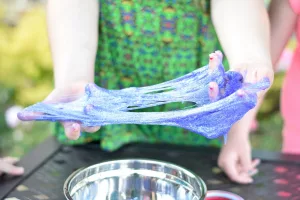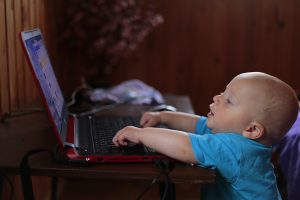Engaging children with diverse abilities in group activities requires creativity, flexibility, and a focus on inclusivity. By incorporating adaptable sports, art and creativity workshops, music and dance classes, and nature exploration, we can create environments where every child feels valued and capable. Let’s dive deeper into each of these activities and explore how they can be tailored to meet the needs of all participants. Adaptable sports are an excellent way to promote physical activity and teamwork. Take seated volleyball, for instance. This sport can be played on a smaller court with a lower net, allowing children who use wheelchairs or have limited mobility to participate as equals. By adjusting the pace and rules, such as allowing multiple bounces of the ball, children can focus on enjoying the game and the camaraderie it brings. Wheelchair basketball is another fantastic option, offering children the chance to experience the thrill of the sport while developing upper body strength and coordination. Sensory relay races, with stations that engage different senses, can cater to children with varying sensory needs. These races can include activities like passing soft tactile balls, navigating through gentle obstacle courses, or listening to audio cues for direction. By embracing these modifications, we ensure that all children can experience the joy of sports.
Expanding on Sports Activities
To further enhance the inclusivity of sports, consider incorporating multi-sensory elements that cater to a wider range of abilities. For example, using balls with bells inside can help visually impaired children engage more fully in games like soccer or basketball. Creating a sensory-friendly environment, such as reducing loud noises or providing noise-canceling headphones, can make sports more accessible for children with sensory sensitivities. Moreover, introducing cooperative games, where the focus is on teamwork rather than competition, can foster a sense of unity and mutual support.
Sports Case Study: Unified Soccer Teams
A practical example of successful inclusive sports is the establishment of unified soccer teams, where children with and without disabilities play together. These teams emphasize cooperation, communication, and shared enjoyment over competition. By pairing children with varying abilities, such teams often see improvements in social skills, empathy, and friendships among participants. Coaches who focus on encouragement and skill-building rather than winning create a positive atmosphere where every child feels valued.
Art and Creativity Workshops
Art and creativity workshops provide a rich tapestry of opportunities for self-expression and skill development. Imagine a painting session where children use adaptive brushes or tools to create their masterpieces. These tools can include modified grips or brush holders for children with limited dexterity. Crafting sessions can be equally engaging, using materials like clay, fabric, or recycled objects to create tactile art pieces. These activities not only enhance motor skills but also encourage sensory exploration. For children who may find traditional art mediums challenging, digital art can be a wonderful alternative, offering a wide range of tools and effects that can be easily manipulated. The key is to provide an array of options that cater to each child’s strengths and interests.
In addition to fostering creativity, art workshops can be a platform for collaborative projects. Group murals or collective sculptures encourage teamwork and communication, allowing children to contribute their unique perspectives to a shared creation. Such projects can be particularly empowering, as they highlight the value of each child’s input and promote a sense of belonging. Art also serves as a powerful medium for emotional expression, offering children a safe space to explore and communicate their feelings through colors, shapes, and forms.
Art Activity Suggestions
- Textured Collages: Use a variety of materials such as sandpaper, cotton balls, and aluminum foil to create collages. This can be particularly engaging for children who benefit from tactile experiences.
- Sensory Bottles: Fill clear bottles with different materials like glitter, beads, or colored water for children to shake and observe. This activity is not only calming but also stimulates visual and auditory senses.
- Interactive Storyboards: Design storyboards where children can add characters and elements using Velcro or magnetic pieces. This activity encourages storytelling and creativity while being accessible to those with fine motor challenges.
Music and Dance Classes
Music and dance classes are vibrant arenas for exploration and connection. These classes can be adapted to suit various abilities by using a mix of auditory, visual, and tactile cues. In music sessions, children can experiment with a range of instruments, from drums to xylophones, that cater to different skill levels and preferences. For children who thrive on rhythm, percussion instruments can be particularly engaging, providing an immediate and satisfying response to their actions.
Dance classes can incorporate adaptive movements that accommodate different physical abilities. For instance, children can use scarves or ribbons to express themselves through movement, allowing for a wide range of motion without the need for complex choreography. Instructors can focus on creative movement, encouraging children to interpret music in their own way, which fosters individual expression and confidence. These sessions can also include group activities like circle dances, which promote social interaction and teamwork. By creating a welcoming environment where every child can participate at their own pace, music and dance classes become a celebration of diversity and creativity.
Practical Tips for Music and Dance
- Use Visual Aids: Employ visual aids like gesture cards or videos to guide dance movements. This can be particularly helpful for children who are visual learners.
- Adapt Instruments: Offer a range of instrument options, such as large drumsticks or padded mallets, to accommodate various motor abilities.
- Create Routine Structures: Having a predictable structure, such as a welcome song and goodbye dance, can provide comfort and security for children who benefit from routine.
Nature Exploration
Nature exploration offers a unique blend of adventure and learning. Activities like nature walks can be tailored to different abilities by choosing accessible trails and incorporating sensory experiences. Children can be encouraged to touch different textures, listen to the sounds of nature, and observe the colors and movements around them. Gardening can also be an enriching activity, providing hands-on experiences with planting and nurturing life. Raised garden beds allow children with mobility challenges to engage in gardening without strain.
Birdwatching is another activity that can captivate children’s imaginations. By providing binoculars and bird identification guides, children can learn to observe and identify various bird species. This activity not only enhances observational skills but also fosters patience and concentration. For a more interactive experience, creating bird feeders or habitat projects can deepen children’s connection with wildlife and teach them about the importance of environmental stewardship.
Expanding Nature Activities
- Nature Scavenger Hunts: Design hunts with sensory clues, such as “find something smooth” or “listen for a bird call,” to make the activity accessible to various abilities.
- Outdoor Art: Use natural materials like leaves, twigs, and stones to create ephemeral art pieces. This encourages creativity and connection with the environment.
- Interactive Storywalks: Combine storytelling with nature walks by placing story pages along a trail. This can engage children who enjoy narratives and visual stimulation.
Additional Activities and Tips
Beyond these core activities, there are countless other ways to engage children with diverse abilities. Storytelling sessions can be adapted by using visual aids, puppets, or interactive storybooks that invite participation. Cooking classes, where children can help prepare simple recipes, teach essential life skills while promoting independence and teamwork. When planning activities, it’s crucial to consider the sensory preferences and comfort levels of each child. Offering choices and being flexible with adaptations ensures that activities remain inclusive and enjoyable.
Inclusive Activity Ideas
- Adaptive Cooking Classes: Use adaptive kitchen tools, like easy-grip utensils, to enable children to participate in cooking activities. Focus on simple, no-bake recipes to minimize complexity.
- Interactive Storytelling: Incorporate tactile storybooks or digital apps with interactive elements to engage children with different sensory preferences.
- Group Yoga: Offer adaptive yoga sessions that focus on breathing and simple poses, using props like yoga blocks and straps to aid children with mobility challenges.
Creating a supportive atmosphere is equally important. Celebrating small achievements, providing positive reinforcement, and encouraging peer support can transform group activities into meaningful experiences. Involving caregivers and families in these activities can also enhance the sense of community and provide additional support for each child’s unique needs.
By embracing inclusivity and creativity, we can design group activities that not only entertain but also empower children with diverse abilities. These experiences help build confidence, foster friendships, and instill a lifelong love for learning and exploration, enriching the lives of all participants.



